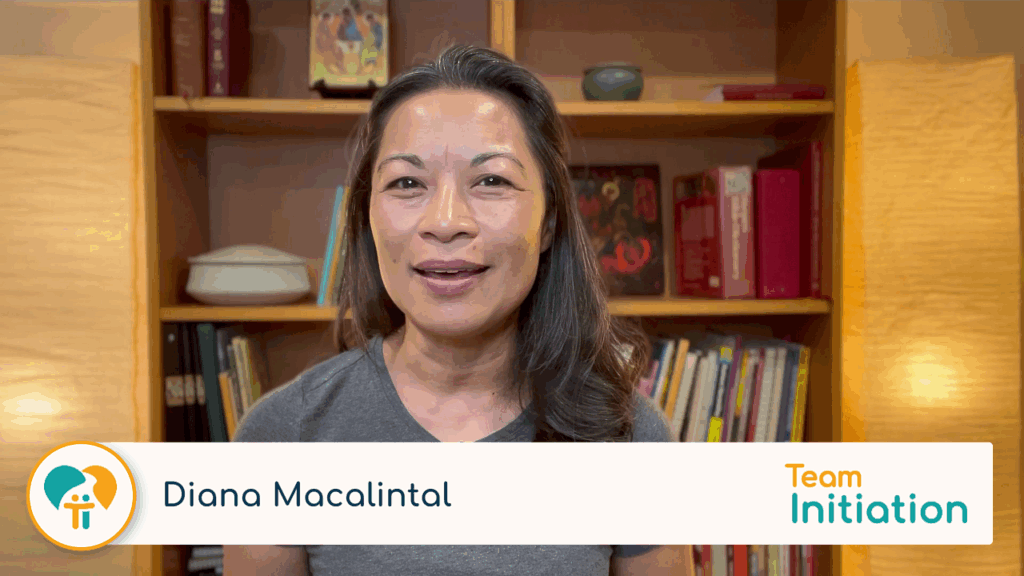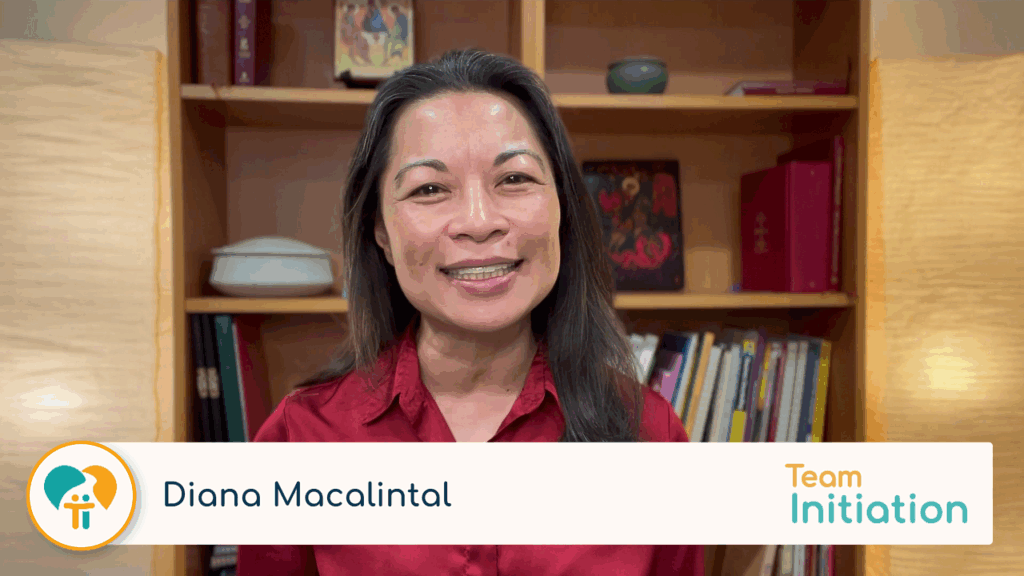
Because I was just a baby when I was baptized, I am more than ever intrigued by the experience of being present at the celebration of baptism now. And with ministry in Christian Initiation there is so much more!
A few years ago our parish celebrated an Easter Vigil that became truly memorable, not because I was a godparent (I wasn’t), but because I was there! The whole evening was a blessing but that year for me the highlight was the reception in our parish hall following the Vigil, when the whole assembly gathered to welcome and congratulate our newly baptized.
It was clear that people felt connected to the neophytes because they had gotten to know them throughout the process of formation and some spoke of their sense of responsibility for these new members. The neophytes belonged to the community. For me, my own renewal of my baptismal promises and the prayers of the sacraments celebrated resounded more deeply—I heard with a renewed heart!
Don’t forget what Baptism makes you
Baptism is a blessing for the one being baptized and a challenge and reminder for the parents, godparents, and for the entire community if we listen carefully to and participate fully in the prayers of the rite. A wonderful wise friend once told me that we forget too much about who we are called to be as baptized “awakened” Catholics. What our faith calls us to be and become is often submerged in the daily-ness of our lives and the ordinariness of our church life.
Re-reading the introduction to the Rite of Christian Initiation of Adults is very much a call to action for the Christian Community—the entire parish community as well as being a guide and encouragement for the renewal of the local church (see especially paragraph 9).. For us as initiation ministers, it is a call to service in the art of reawakening the entire community, step-by-step through the formation of those seeking to become one with Christ.
Family, parish, community, team, sponsors, godparents, local (diocesan) church—all these and more are the catechists and companions for those who are seekers. In a way, we all are seekers on an intentional journey of faith, living in a way that Christ’s message and his grace are made visible and tangible to those whom we encounter. As more members of the parish are incorporated into the formation process, the more the seekers will, all along the way, become integrated into the community and the more the whole parish will become what the catechumenate process envisions: the welcoming and supportive family of faith for these new members.
As more members of the parish are incorporated into the formation process, the more the seekers will become integrated into the community and the more the whole parish will become what the catechumenate process envisions.
Involve your catechumens and candidates in the parish
Throughout the catechumenate period, engaging in parish activities together, personal conversations and storytelling, working side-by-side in projects, developing friendships (or at least acquaintances) with parishioners is key to the deeper bond that adds dimension to the celebration of the rites.
Pairing the seekers (catechumens and candidates) with parishioners who are visiting the sick and homebound, helping with the parish food pantry and outreach, involved with the parish garden or collecting donations for the Vincent de Paul ministry, planning and putting on a parish festival or feast day celebration or prayer service—all these provide foundation for meaningful testimony from the parish community at the Rite of Sending Catechumens for Election.
During Lent, when the catechumenal rites are celebrated at different Mass times, more members of the parish become aware of and become involved in the celebration of the progress of the catechumens, elect, and candidates. A clear simple explanation of each rite will help keep the assembly aware of their role in the progress of the seekers. That will be all the more effective as the celebration of the Easter Vigil invites the community to stand with and welcome its new members.
During the post-baptismal period, those relationships and circles of connection continue to keep neophytes bonded to the parish community, providing opportunities for continuing incorporation into the life and apostolic work of the parish.
When the neophytes are wearing their white baptismal garments to the Masses they participate in during Easter season, the members of the parish can continue to personally welcome them, pray with and for them. The neophytes will also understand their role in renewing the community and in welcoming new seekers in the weeks and months—and years—ahead.
Your Turn
How are you keeping your parish connected to your catechumens? What are the hidden points of connection that can be explored and developed? Share your thoughts in the comments below.

















